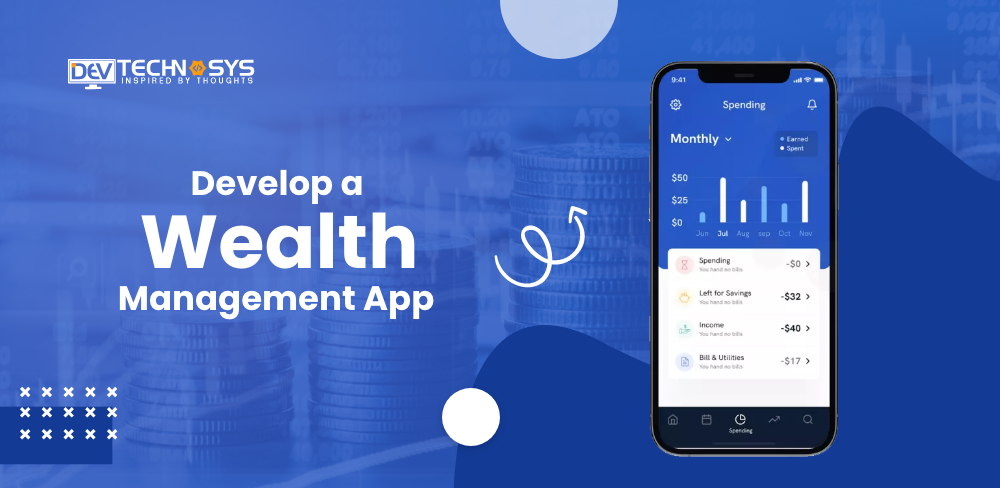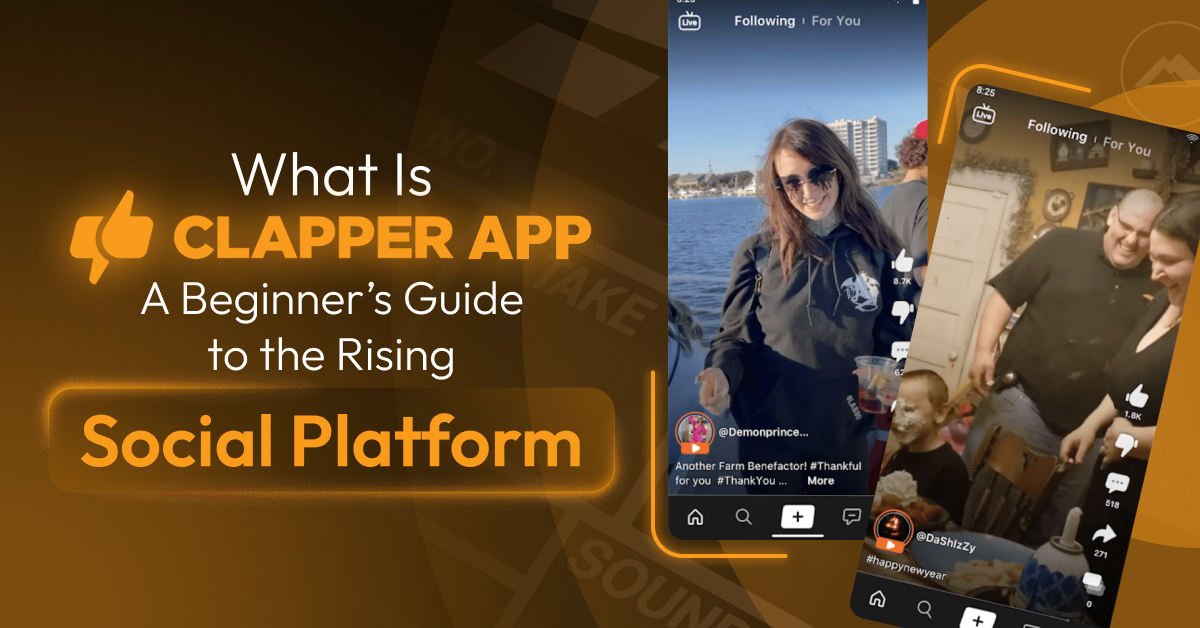“Do not save what is left after spending, but spend what is left after saving.”
– Warren Buffett.
Quick Summary: Do you want to develop a wealth management app that can manage all your finance? No worries! Read this blog to get an insight about creating a top-notch wealth management app along with essential features, cost, monetization methods and so on.
In today’s tech-driven world, managing finances is no longer confined to dusty spreadsheets and cryptic bank statements. Enter the wealth management app, a pocket-sized powerhouse offering real-time insights, personalized guidance, and seamless control over your investments. But how do you navigate the complex landscape of app development and build a wealth management app that truly stands out?
The analysis estimates that the global wealth management sector would produce $3.43 trillion by 2030, with a CAGR of 10.7% from 2021 to 2030. In 2020, the sector generated $1.25 trillion. This figure is enough to convince you to create a wealth management app.
So, in this blog, we will discuss the steps to develop a wealth management app, its key features, costs and other aspects.
Let’s begin.
What is a Wealth Management App?
A Wealth Management App is a digital platform designed to assist individuals in managing their financial assets and investments. It offers features such as portfolio tracking, financial planning tools, investment recommendations, and real-time market insights.
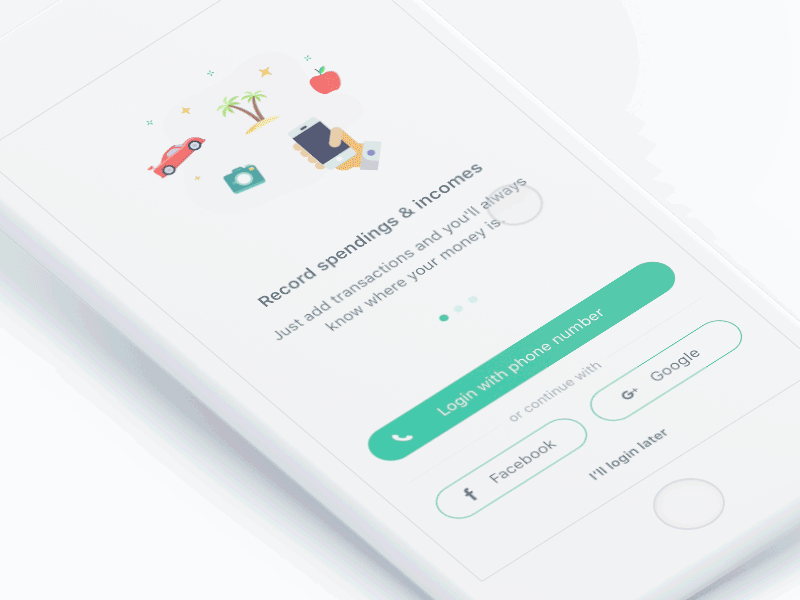
Users can monitor their wealth, set financial goals, and receive personalized advice based on their risk tolerance and financial objectives. These money management apps often provide a convenient way to access and control one’s financial portfolio, facilitating informed decision-making.
Additionally, some apps may offer automated investment services, known as Robo-Advisors, streamlining the investment process for users seeking a hands-off approach to wealth management.
Market Stats & Growth of Fintech Industry
- In the wealth management sector, assets under management are expected to reach US$130.60 trillion by 2024.
- The industry is dominated by financial advisory, which is expected to generate US$126.70 trillion in revenue by 2024.
- By 2027, assets under management should have grown at a compound annual growth rate of 5.90%, translating into a market volume of $155.10 trillion.
- The research states that the world’s wealth management market was worth $1.25 trillion in 2020 and is expected to grow to $3.43 trillion by 2030, with an average CAGR of 10.7% from 2021 to 2030.
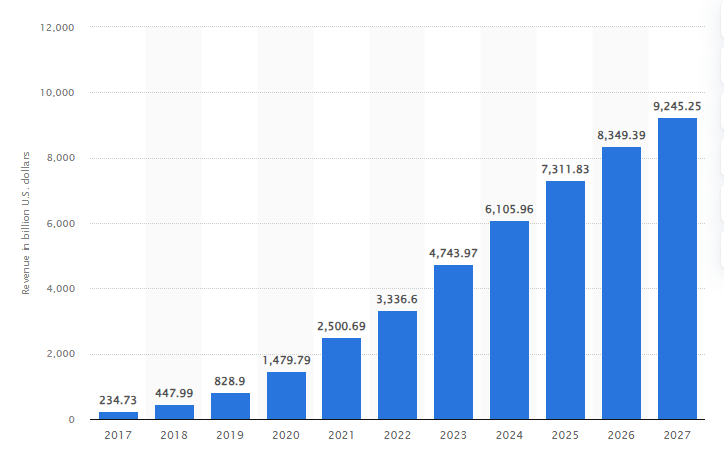
- In 2025, the market for digital assets is projected to increase at a 17.4% annual rate of revenue.
- With an AUM of $152.20 billion in 2024, Digital Investment will be the largest market.
- In 2024, the average annualized unit value per user in the digital investment sector is expected to reach $257.50.
- It is anticipated that there will be 5,480.00 million users in the digital payments market by 2027.
Steps to Develop a Wealth Management App
Developing a wealth management app requires careful planning, attention to detail, and a deep understanding of financial principles. So, if you want to develop a wealth management app for your fintech business, then you need to take help from a mobile banking app development company. But first let’s have a look at the below steps:
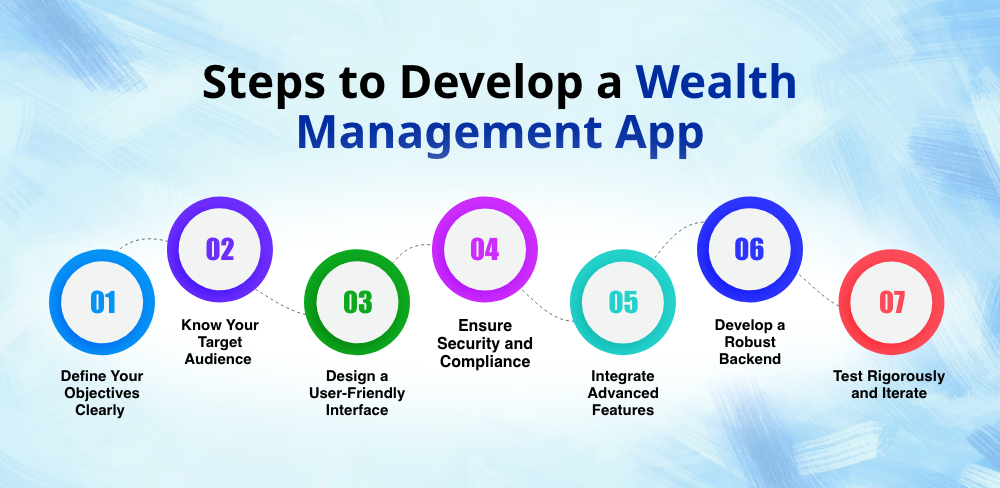
1. Define Your Objectives Clearly
Before you create a mobile app that manages all your finances, list the main goals for your RBC wealth management app. Determine the target demographic it is intended to assist as well as the specific problems it seeks to solve. Are you concentrating on financial planning, investment tracking, or both? Setting clear objectives for yourself will act as a guide during the development process.
2. Know Your Target Audience
Get to know your users inside out. Understand their financial needs, challenges, and preferences. Conduct thorough market research and gather feedback to ensure your app aligns with the expectations of your target audience. This user-centric approach will help you create a more intuitive and engaging wealth management solution.
3. Design a User-Friendly Interface
Your wealth management app’s user interface and user experience play a major role in its success. Provide a clear, user-friendly design that makes complicated financial data easier to understand. Make sure the navigation is smooth, use images, and use language that is easy to grasp. Make user accessibility a top priority and ensure that users can easily access and understand their financial information.
4. Ensure Security and Compliance
Security is crucial since financial information is sensitive. For that, you must take help from a finance management app development company. They put strong encryption procedures in place to protect user information. Adhere to industry rules and guidelines to gain your users’ confidence.
They will incorporate a clear statement about your app’s dedication to security and privacy, and give users the resources and knowledge they need to maintain and safeguard their accounts.
5. Integrate Advanced Features
Offer features that significantly increase value if you want to differentiate yourself in the crowded wealth management market. Provide resources for risk assessment, portfolio analysis, and goal planning.
Financial forecasts, investment tracking, and real-time market data are further important elements. Customizable dashboards and alerts are examples of personalization tools that may improve user experience and maintain user engagement.
6. Develop a Robust Backend
Any successful loan lending app development starts with a strong and expandable backend architecture. Select a dependable and secure server architecture for managing communications, transactions, and user data.
Make sure your backend facilitates easy integration for real-time data changes with external financial institutions and APIs. To provide a seamless and responsive user experience, evaluate and adjust the performance on a regular basis.
7. Test Rigorously and Iterate
Do extensive testing before launching to find and fix any bugs, usability problems, or security risks. Conduct beta testing with a limited user base to get insightful input and make the required adjustments.
Recall that the app’s initial release is not the end of the development process. To remain current and competitive in the ever-changing financial technology world, your wealth management app should be continuously iterated, user feedback tracked, and app performance evaluated.
Key Features To Develop a Wealth Management App
Features are crucial for the success of any fintech applications. So, it is essential to wisely select the features that adhere to your budget and app. Below are some of the crucial features that you must integrate in your wealth management app.
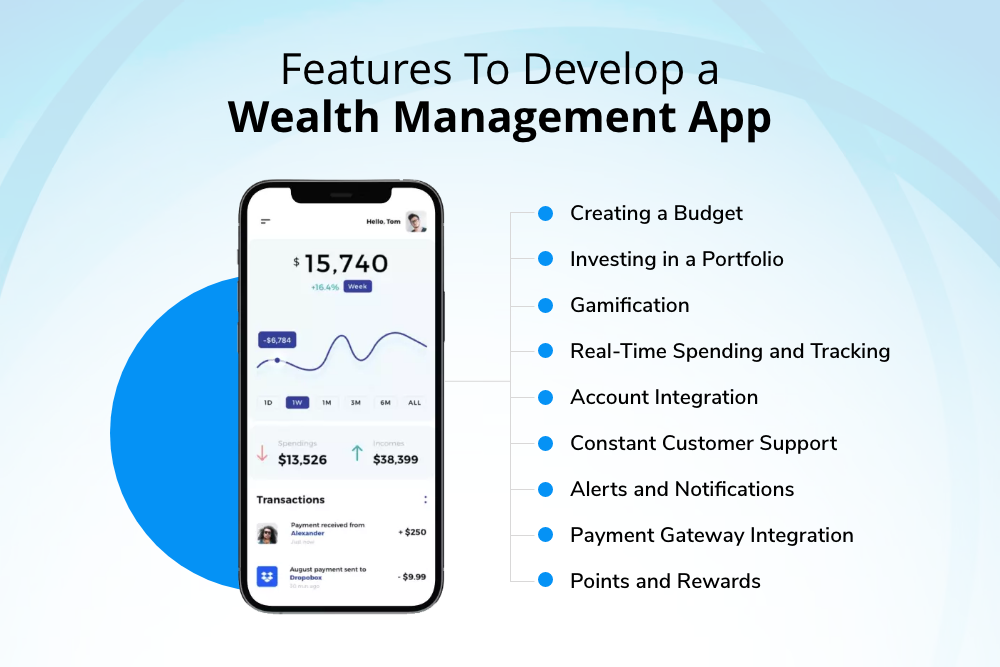
● Creating a Budget
You may make a budget with the assistance of a decent digital money management app. With the support of this function, you may track your expenditure and make sure you’re not going over budget.
● Investing in a Portfolio
Investing in a portfolio of securities, bonds, and other items is another feature of a solid digitized wealth management app. You can boost your wealth over time with the help of this app.
● Gamification
Gamification is a great way to maintain user engagement. Users will be encouraged to utilize the app more often by this feature. A p2p payment app development that makes money more enjoyable and useful by gamifying it can assist users in reaching their savings objectives.
● Real-Time Spending and Tracking
Ensure that you provide a personal financial application that enables users to monitor their spending. Since users won’t need to move between applications to keep track of where they are putting or spending their money, this function will come in useful. They will save time, effort, and money because it can be completed easily on a single platform.
● Account Integration
Check that the information from all of the customer’s financial accounts including loans, mutual funds, credit cards, and debit cards is combined in your financial management app. Everything pertaining to or necessary for managing your finances should be able to be found in one place with your financial app.
● Constant Customer Support
It is crucial to provide 24*7 customer assistance through expense management app development. One of the most important features that will help you attract a worldwide client and retain existing ones is multilingual customer care that is available day and night.
● Alerts and notifications
One of the most important things you should incorporate when you develop a mobile wealth management app is notification. A really great method to inform clients about their tax returns and show them you are interested in them is by providing them periodic alerts or notifications.
● Payment Gateway Integration
Enable seamless financial transactions by a secure payment gateway integration in your wealth management app. Users can conveniently invest, transfer funds, and execute financial transactions with confidence and efficiency.
● Points and Rewards
Offering incentives to users of your app, such as credits, cashback, discounts, or coupons, is a terrific approach to keep them interested and committed. Receiving such large payouts encourages users to stay active and involved with the app. This can guarantee that the app stays well-liked and draws in additional users.
Top 5 Wealth Management Apps
| Popular Wealth Management Apps | Available Platform | Downloads | Ratings |
| Mint | Android | iOS | 10M | 4.1 |
| EveryDollar | Android | iOS | 1M | 3.3 |
| Wise | Android | iOS | 10M | 4.7 |
| Honeydue | Android | iOS | 100K | 3.4 |
| NerdWallet | Android | iOS | 1M | 4.6 |
1. Mint
With a free money budgeting app like Mint you can manage all of your bills, spending, and income in one location. You may view your complete financial picture at a glance thanks to its connections to your bank accounts and other financial institutions. Additionally, Mint offers you tools and specialized insights to assist you in creating a budget, saving money, and achieving your financial objectives.
2. EveryDollar
EveryDollar is a popular budgeting app that helps users take control of their finances. This helps you avoid overspending and ensures you’re making progress towards your financial goals. An app like EveryDollar helps you see where your money is going and make informed spending decisions.
3. Wise
This is a well-liked app for international money transfers. It is renowned for its quick transfer times, cheap exchange rates, and clear costs. Users may use the app to pay bills and make purchases overseas using a Wise debit card. So, if you are looking for the cost to develop a fintech app like Wise, consult a reputed firm.
4. Honeydue
Honeydue is one of the best wealth management apps designed to help couples manage their finances together. It allows couples to connect their bank accounts, track their spending, set budgets, and pay bills. Honeydue also has features that encourage communication between couples about their finances.
5. NerdWallet
NerdWallet is a free fintech app that helps you make informed financial decisions. It aggregates your financial accounts in one place, giving you a holistic view of your spending, savings, and investments. It is the best app for wealth management and also provides personalized insights and recommendations which helps you save money.
Cost to Develop a Wealth Management App
The cost to develop a wealth management app may vary significantly based on a number of criteria, including the app’s complexity, functionality, platform compatibility, location and expertise of the wealth management software development team, and many more.
But to give you a ballpark figure, developing a simple month-budgeting app may run you anything from $8,000 to $15,000. This would include fundamental functions including goal-setting, spending management, and budget tracking.
The fintech app development cost may increase to $15,000 to $25,000 if you choose to add more sophisticated features like financial planning, bill paying, investment tracking, and connectivity with outside financial services. To calculate the cost of wealth management app development, you should check out the below formula:
Total development hours * Hourly rate of developers = Total development cost
So, it is critical to remember that developing a wealth management app requires continuing upkeep and bug-fixing that will increase the overall cost to develop a mobile app.
How to Monetize a Wealth Management App?
Monetizing a wealth management app requires a strategic approach that adds value to users while generating revenue. So, as per the fintech app development company, here are some of the well-known monetization strategies:
● Subscription Models
Implementing a subscription-based model is a popular strategy for wealth management apps. Offer users different subscription tiers, each providing varying levels of features and services.
Basic plans can include essential budgeting tools and investment tracking, while premium plans may offer personalized financial advice, real-time market insights, and advanced portfolio management. This recurring revenue stream ensures a steady income for the app.
● Freemium Model
Adopt a freemium model by offering a basic version of your wealth management app for free and charging for premium features. This allows users to experience the core functionality of the app without any upfront cost, enticing them to upgrade for additional benefits.
Premium features could include more in-depth financial analysis, access to premium market research, or exclusive investment opportunities.
● Affiliate Marketing
Collaborate with financial institutions, brokerage firms, or other relevant businesses and integrate affiliate marketing into your app. Recommend financial products or services to users based on their financial profiles and preferences.
Earn a commission for each user who clicks on the recommended products or services and makes a purchase or signs up. Ensure transparency and maintain trust by clearly disclosing any affiliate relationships.
● In-App Advertisements
Incorporate targeted advertisements within your app to generate revenue. Advertisers can include financial service providers, investment platforms, or companies offering relevant products and services.
Ensure that the ads are non-intrusive and relevant to the users’ financial goals and interests. Consider offering an ad-free premium subscription for users who prefer an uninterrupted experience.
● Affiliate Marketing
Another fascinating approach to make money off of a personal finance app is to collaborate with financial institutions and provide affiliate marketing possibilities. For instance, you may collaborate with a credit card firm through your app and get paid a commission for those who apply for new credit cards.
● Data Monetization
Lastly, you may think about making money off of user data. You must, however, guarantee user privacy and be open and honest about the data you acquire. Selling aggregated user data to financial institutions or using user data to develop customized financial solutions are two possible approaches for monetizing data.
How Much Does It Cost To Maintain a Wealth Management App?
The maintenance cost of a wealth management app can vary based on several factors. Key considerations include the complexity of features, the scale of the application, ongoing updates, and security measures. On average, annual maintenance expenses range from 15-20% of the initial development cost.
For a personal wealth management app with basic functionalities, the cost to maintain a mobile app could be around $1,000 to $3,000 per year. However, for more sophisticated apps with advanced features, complex algorithms, and higher security standards, the annual maintenance cost may surpass $5,000 or more.
Regular updates to ensure compatibility with new operating systems, security patches, and user interface enhancements contribute to these expenses. Ultimately, it’s crucial to take assistance from a mobile app maintenance and support services provider who can regularly update and maintain your wealth management app.
Start Your Wealth Management App Development Journey With Dev Technosys!
Wealth management applications are in excess demand. Also, why not? They provide an all-in-one answer for all of your financial worries. They also make it easier for you to create wise budgets. If you want to develop your own wealth management app, get in touch with Dev Techosys, an expert mobile app development company.
We may assist you in bringing your wealth management concept to life. Our developers will assist you with developing an app with all the cutting-edge features for money management and a seamless user experience. From creating wealth management apps like Mint to Betterment, our expert developers are proficient in crafting any kind of personal finance apps.
So, why delay? Give us the details of your wealth management app development project, and our professionals will create flawlessly tailored fintech apps inside your allocated budget. Get a free consultation right now.
Frequently Asked Questions
1. How Long Does It Take to Develop a Wealth Management App?
Development time for wealth management apps depends on features. Basic apps with tracking and investing tools take 2-4 months. Complex ones with AI-powered recommendations and advanced analytics can take 6-8 months.
2. How Much Does it Cost to Develop a Fintech Software?
The fintech software development can cost anywhere from $8,000 to $25,000 depending on features, complexity, and developer location. Basic personal finance software is cheaper, while complex trading platforms or banking software cost more.
3. How to Develop a Personal Finance App?
- Know your niche
- Define core features
- Prioritize security
- Design UI/UX
- Develop an MVP
- Test & deploy the app
- Monetize strategically
4. What Are the Benefits of Creating a Wealth Management App?
Creating a wealth management app can be beneficial in several ways:
- Attract and retain high-net-worth clients: Offer digital tools and personalized advice, catering to modern preferences.
- Reduce operating costs: Automate tasks like portfolio tracking and reporting, freeing up resources.
- Increase revenue: Generate fees from investment management, subscription models, or data-driven insights.
- Boost brand loyalty: Build trust and engagement with a user-friendly, accessible platform.
